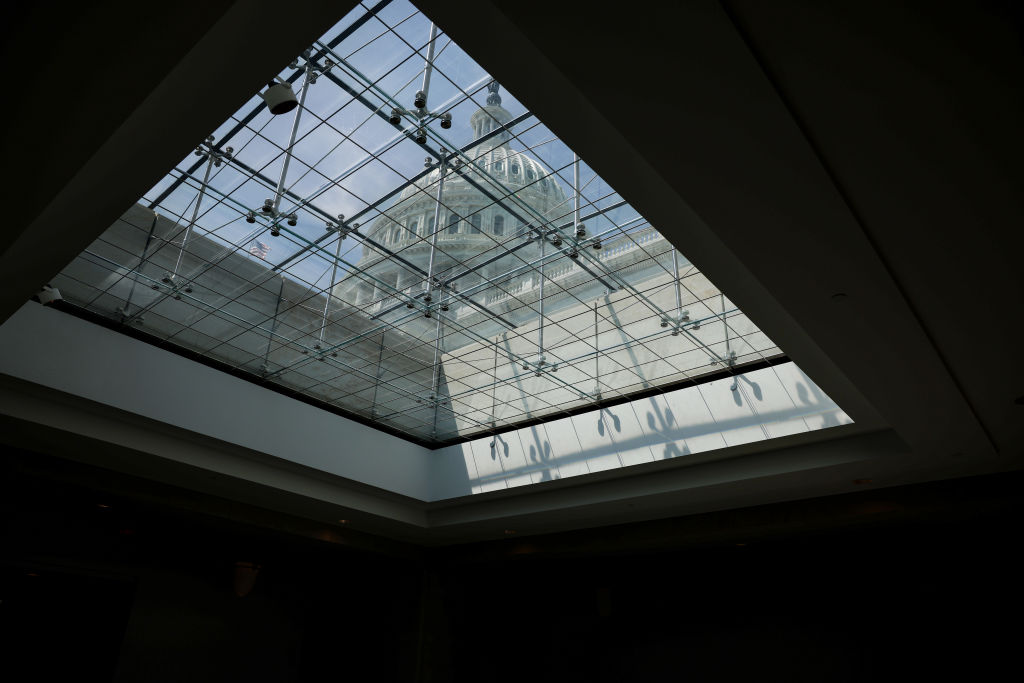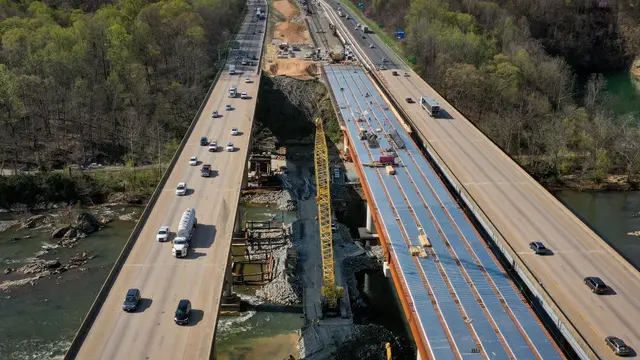Editor's note: Hannan Hussain is a foreign affairs commentator and author. He is a Fulbright recipient at the University of Maryland, the U.S., and a former assistant researcher at Islamabad Policy Research Institute. The article reflects the author's opinions and not necessarily the views of CGTN.
After the U.S. Senate greenlit a $1 trillion bipartisan infrastructure bill on August 10 – a top priority for U.S. President Joe Biden and widely viewed as one of the largest infrastructure packages in decades – lawmakers on Capitol Hill appear keen to view rebuilding funds as some transformative infrastructure jackpot.
"If you're going to find an area of potential agreement, I can't think of a better one than infrastructure, which is desperately needed," said Senate Minority Leader Mitch McConnell, broadly in unison with Biden's own enthusiasm on transforming America.
At the heart of the legislation is $550 billion in fresh funding for long-overlooked priority areas, including roads, railways, bridges and a noticeable digital divide. A long-term hope is that the bill may spark an early acknowledgment of America's multi-sector infrastructure investment gap and inspire much higher infrastructure spending as a percentage of the U.S. economy.
But to drive any such preparation home, a key test of Biden's signature legislation will be whether it can maintain a strictly domestic focus on infrastructure investment, without feeding bipartisan illusions that ambitious gains could materialize in the global infrastructure race.
Sentiment at the grassroots has already shown legions of local government representatives focused on declaring infrastructure spending as their top priority, with over 90 percent of city officials polled in a recent survey putting their weight behind that declaration.
The room to sporadically tout overseas infrastructure heroics is even smaller for Washington, considering that American cities and states – apparent beneficiaries of the $550 billion push – are already estimated to spend along vastly different lines over the same 10-year period as the legislation.
Without putting a lid on premature speculation – such as the bill being an instrument to "compete in the global economy just when ... [Washington is] in a race with China" – the needs of most American communities and families emerge easily on the backburner.
This is important, because an integral feature of Biden's address on the Senate's passage this week was a ground-up commitment to accelerating U.S. employment, where job gains cut across cities, tribal communities, and everything in-between. Is it then practical forecasting to hint that the U.S. could emerge in a position to "outcompete the rest of the world," when domestic gains are yet to fully materialize?
Interestingly, recent history has its own lessons on why present expectations ought to be tempered. For one, the bill still needs to compensate for years of neglected U.S. infrastructure spending before any credible measure to "lead the industries of the future" falls into view. Research from Morgan Stanley shows trillions of dollars in urgently needed investment support to address repairs in hard U.S. infrastructure.

The dome of the U.S. Capitol Building is seen from the Capitol Visitor Center in Washington, D.C., August 6, 2021. /Getty
By a separate estimate, nearly half of the anticipated $550 billion investment sum could be sucked into the country's federal budget deficits too. Thus, it is increasingly significant to avoid any premature conflation between a domestic "revival" of U.S. infrastructure and "progress" on the back of that same investment.
It is also unsurprising that the impulse to compete with China in research, development and wide-ranging infrastructure was a significant factor in gluing together the bipartisan consensus on the bill.
Whether it's China's giant leaps in innovation or the magnitude of its investments in transportation and environment, Beijing's gains have been gauged both constructively and out of envy in U.S. policy circles, compelling a divided Senate to cement its unity on infrastructure spending.
However, it could take more than just a reactionary feat to elevate U.S. leadership in quality infrastructure – domestically and globally. From the onset, Washington should be prepared to commit to multisector infrastructure investment as a decades-long imperative, render its continuity self-reliant through a cycle of localized infrastructure financing and re-evaluate each sector's contribution to delivering results for the American people.
All that could easily take years and may require some necessary legwork as prior confirmation that the trillion dollar infrastructure bill will successfully rescue swathes of deteriorating U.S. infrastructure from further depreciation and that updates to broadband networks happen in a domestic climate conducive to global competition.
In light of all these building blocks, a sober look at infrastructure investment end-goals calls for a departure from bipartisan victory laps. Particularly needed is a look at Washington's strategy to use the focus of this legislation, unquestionably tethered to the service of traditional infrastructure at home, as a chance to unlock a timely opening for global competitiveness.
(CGTN)
 简体中文
简体中文



